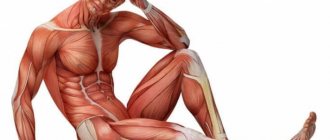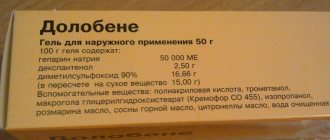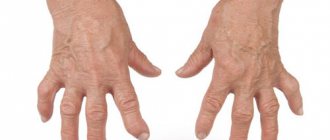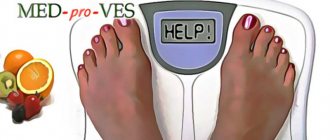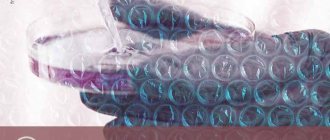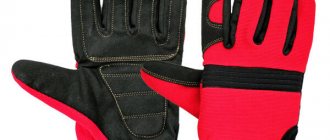Dedicated to everyone who gets and pulls off calluses on the horizontal bar, with a barbell or a kettlebell.
Rough skin on manly palms or manicured palms will undoubtedly indicate that you've been training hard, but soreness may temporarily limit your range of exercise. Therefore, we could not ignore this problem and found information on how to protect our palms and how to deal with calluses that had already appeared.
In order not to immediately overwhelm you with an abundance of text, we will first analyze the generally available simple methods: exercise technique, winding the working surface, magnesium and analogues, caring for the palms. And in the second part of the article we will give an overview of special equipment - gloves and pads.
How to avoid calluses?
As part of the topic, the most important question for any turnstile athlete or strength athlete is how not to rub calluses on the horizontal bar? There are two answers to this - a laconic one and a more detailed one. The first, short one - no way. You can avoid roughening and peeling of the skin only by completely refusing any load. The slightest friction will definitely lead to the appearance of calluses. The greater the friction, the higher the likelihood of crusts appearing and breaking off.
But you can slow down the process of formation of local thickening of the skin and reduce the risk of painful breakdown. Several techniques are used for this.
Correct exercise technique
Most often, athletes practice a full-contact grip, in which the entire palm or most of it is in contact with the metal. In order for calluses on the hands from the horizontal bar to form less frequently and more slowly, it is recommended:
- Change grip. Instead of palm grip, finger grip must be used. This is more difficult - the fingers are weaker, but over time their strength will increase and the exercises will become easier. At the same time, there will be noticeably fewer “callus” problems.
- Rigidly fix your fingers or palm if you still don’t want to give up your usual grip. It is necessary, if possible, to avoid rotating the brush. Not all exercises meet the recommendations, but it is advisable to keep this point in mind.
- Use a thick bar. The thicker the horizontal bar, the less friction between the surfaces. Of course, working with a thicker projectile is much more difficult, but sometimes you have to adapt to the circumstances.
Pads/gloves
One of the best options is to use protective gloves or pads. There will be fewer calluses from the horizontal bar if you do not neglect your equipment. A special feature of the gloves is the presence of soft linings in the places of greatest contact with the bar. But you need to remember that the products are different - the degree of adhesion to the projectile is different.
An alternative to gloves is leather pads. They are rectangular pieces of leather with strong fasteners (usually Velcro). They can be easily selected according to the size of your palms. Among the advantages of overlays is durability.
Sports and liquid magnesia
Many athletes, when asked how to avoid calluses from the horizontal bar, answer stereotypically: “You need to use magnesium.” In fact, powder and liquid magnesia are not designed to prevent the formation of skin thickenings. The purpose of the materials is to increase the degree of adhesion of surfaces. This makes it possible:
- reduce wrist rotation;
- reduce the risk of falling from the horizontal bar;
- hold the barbell tightly without dropping it due to sweaty palms.
Magnesia increases the coefficient of friction, so there is a risk of breaking existing calluses if you perform “rotational” exercises. The material should not be used, for example, when performing sun exercises, ring push-ups or forceful exercises. If there are almost no calluses, the contact between the palms and the bar is close, and rotational movements are minimal, magnesium will serve well.
Wrapping the horizontal bar with adhesive tape
Wrapping the horizontal bar or bar with adhesive tape will help increase anti-slip performance. Instead, you can use rag tape or tennis racket winding. This is not the best option, but it will do as a relatively good makeshift help.
Plaster/tape tape
Perhaps the best option. Wrapping your hands with a plaster or tape is another alternative to gloves. But in this case there is no thickening of the projectile, which means the exercise will be easier to perform.
There are several types of tapes. It is recommended to use those that have good adhesive properties and high strength. The winding must maintain integrity even under prolonged intense loads.
https://youtu.be/VNIOEAF6e5I
Magnesia
If anyone doesn’t know yet, sports magnesia is a special powder based on magnesium salt (also found in the form of a solution), reminiscent of loose chalk. It improves friction and reduces sweating on the surface of the palms. This is due to its special property, which is expressed in its high hygroscopicity and ability to bind sebum.
To use magnesium effectively, you need to thoroughly degrease the surface of your palms with soap. It’s worth saying right away that with multi-repetition complexes, for example, when you need to do 150 pull-ups in a short period of time, magnesium will not save time. The technique of gripping and briefly resting your palms will still work here.
In the gyms you can most often see powdered magnesia in a bucket near the horizontal bar. Surely everyone has already had the opportunity to experience its properties. Then let’s note the advantages of liquid magnesia:
Treatment of calluses
It is not enough to understand how to prevent formations from appearing. It is important to know how to remove calluses on your hands from the horizontal bar. If rough skin does not cause any big problems, then torn calluses cause pain and make training impossible. There are many treatment options. Propolis has proven itself very well. The product relieves pain and accelerates healing.
You need to apply propolis before going to bed - a thin layer under the bandage. In the morning, the latter is untied, and the dried substance is scraped off. The procedure must be repeated until the problem is completely resolved. Until the calluses heal, you should refrain from training.
Other treatment options are presented in the table.
| Means | Action | Recipe |
| Oak bark decoction | Anti-inflammatory and regenerative effect | The bark is boiled over high heat for at least an hour. Afterwards, the broth is allowed to cool, and then the problem area is wrapped with gauze soaked in the broth. |
| Onion pulp | Makes it possible to painlessly get rid of formation | The raw onion is crushed to a mushy state and applied to the hand. The mixture is fixed with a plaster or bandage. |
| Potato | Wound healing agent | Similar to onion paste. |
| Garlic | Similar to onion | Similar to onions. |
| Aloe juice | Powerful anti-inflammatory effect. Reduces the degree of keratinization of the skin. | The juice is squeezed out of the plant. The mushy aloe residue is wrapped in gauze and applied to the problem area (fixed with a plaster or bandage). |
In most cases, self-medication is sufficient. But, if nothing helps, you need to contact a specialist. Modern medicine can easily treat calluses using nitrogen and laser.
Tip 1: Down with the gloves!
Most athletes use gloves during training. However, they often cause poor exercise technique and can also cause severe friction. One of the consequences is the appearance of calluses.
You can reduce friction by using chalk to rub your palms. This will not only protect your hands from damage, but will also not interfere with sports activities.
Callus care
Any athlete should be aware of how to get rid of calluses from the horizontal bar and how to treat them. But it’s better to think about preventing complications. Yes, calluses cannot be avoided, but you can minimize the side effects of training.
Callus care includes:
- regularly softening the skin with cream and moisturizing it with lotion; dry skin provokes the appearance of cracks and thickening; soft - on the contrary, elastic and less prone to cracking;
- removal of growths; get rid of rough, but not torn, calluses using pumice, sandpaper or a razor; Before the procedure, it is recommended to properly steam the brushes in soapy water.
Tip 3: patch on the athlete’s hand protection
You can protect your hands from damage and calluses using a regular bandage. It is recommended to use the adhesive in rolls; it holds well and you can easily make the required overlays from it.
Cut the patch into strips of the required length. Wrap your palm and pull it across your middle and index fingers. To make the pad more durable and not fall off during training, secure it additionally. To do this, bring 2 strips of adhesive plaster to the base of the palm, crossing them with the strips between the fingers.
What to do if the callus has already been torn off?
What to do if prevention and care for calluses did not help? What to do if the growth is torn off during training? If an incident occurs, you must:
- stop training;
- treat the torn skin with an antiseptic;
- stick an adhesive plaster to the damaged area;
- At home (or, if possible, in the gym) treat the callus with hydrogen peroxide.
After providing yourself with first aid, you need to look at the table presented just above and use one of the treatment methods. It is highly undesirable to train during this period. Even if you use gloves or pads, sweat will get into the damaged area. For this reason, healing will take a long time, and pain will prevent you from training effectively.
Tip 5: healing baths
If calluses do appear, warm baths with the addition of sea salt will help you quickly get rid of them. It is enough to put your hands in the water for 15 minutes. After this, gently rub the pumice stone in the area where calluses appear, removing dead skin. The last step is to apply a thick, rich cream.
A man is decorated with scars, not calluses. During active sports activities, you need to take care of your hands, then achieving body relief will be possible without bleeding calluses.
What are they made of?
Most often, such products are made of leather or synthetic material that covers the palms and is attached to the wrist. The design usually has two or three finger holes.
An elastic bandage and similar materials work well. Good grip is critical because the pads make it easier for your hands to glide, making the exercise easier to perform. Genuine leather pads last longer, but are also much more expensive. However, in some cases they are necessary, if your hands or palms become sweaty, then such pads add grip.
Grips are most often made from foam rubber, silicone or rubber.
Selection of materials for sewing gloves
Gloves for the horizontal bar can be made from ready-made purchased products. Moreover, they belong to different price categories. It is very important that the gloves for the horizontal bar are comfortable and durable. You also need to remember that in the case of cycling gloves there are several nuances. Very often their back side is open. Moreover, the manufacturer made it this way specifically for better ventilation. Therefore, in winter they will be quite cold, although in summer they are very comfortable. To exercise in them on the horizontal bar in winter, you need to select a soft material and make two tabs out of it that will completely cover the holes. If the gloves are leather, then the material for closing the holes should also be the same.
Construction gloves also have their drawbacks. First of all, this is their quality. Just a few workouts can ruin them completely. Any gloves, even the most expensive ones, have negative sides. That is why many people decide to sew them for themselves. But first things first.
What are they made of?
Most often, such products are made of leather or synthetic material that covers the palms and is attached to the wrist. The design usually has two or three finger holes.
An elastic bandage and similar materials work well. Good grip is critical because the pads make it easier for your hands to glide, making the exercise easier to perform. Genuine leather pads last longer, but are also much more expensive. However, in some cases they are necessary, if your hands or palms become sweaty, then such pads add grip.
Grips are most often made from foam rubber, silicone or rubber.
Kinds
To choose the right treatment, you need to determine the type of skin formation. Calluses on the hands are divided into several types, which have individual differences.
Water
Strong friction irritates the top layer of skin. The person feels a burning sensation, the sore spot turns red, and a bubble grows. The liquid under the dead film protects the wound from microbes and promotes tissue regeneration.
If pressure continues to be applied to the blister, it may burst. The fluid leaks out, and the wound becomes a conduit for infection into the body.
Dry
A hard callus forms in a place that receives constant moderate irritation. The fingertips, palms, and elbows are at risk. The skin slowly becomes coarser and thickens.
This is a kind of protective reaction of the body that prevents damage to the deep layers of the dermis. A hard, rough coating reliably protects your hands from injury, but it looks unsightly and can interfere with your usual work.
Rod
Severe keratinization on the hands can transform into a callus. The peculiarity of the formation is that it has a root that grows deep into the skin. As it grows, it provokes acute pain, compresses nerves and disrupts the integrity of capillaries.
It takes a lot of time and effort to treat internal callus. For complete elimination, it is recommended to seek medical help.
Professional
Hands with dry calluses that appear in the same place indicate that a person is professionally engaged in some type of activity.
- Dense calluses on the fingertips are a calling card for guitarists and secretaries. Constant playing of strings and typing on the keyboard provokes roughening of the fingertips.
- A callus on the index finger appears in people who have to write or draw a lot, for example, high school students and students. Pressure from a pen or a simple pencil causes dropsy, in the place of which a hardening and dry growth often remains.
- Fans of computer games often suffer from fingertips. Scrolling the mouse wheel for many hours traumatizes thin skin and stimulates its thickening.
Professional calluses on the palms can be seen in athletes, builders, summer residents, and goods packers. To reduce physical stress, these people should wear gloves while working or exercising.
Prevention
Preventative measures help prevent the formation of calluses and keep your hands healthy. Soft, moisturized skin is resistant to damage and less susceptible to friction. Experts recommend:
- morning and evening, smear your hands with a nourishing cream with the addition of vitamins A and E;
- When performing sports exercises, sprinkle your palms with talcum powder;
- Wear gloves when lifting heavy objects, digging the garden, or doing other physical work.
Preventive procedures quickly restore elasticity and tenderness to your hands. Once a week, you should lubricate your skin with heated olive oil, put on cotton mittens and leave the compress on until the morning.
You can use boiled potatoes. Mash the tubers into a puree, add a little milk and butter. Place the warm mass on your hands, wrap it in polyethylene and put on mittens.
Regular care and protection guarantees brilliant results and prevents the formation of wet and dry calluses.
https://youtu.be/ZeygsOBEl80
How to put neoprene grips on a horizontal bar?
Most products are easy to stretch onto the crossbar, but neoprene ones are not so easy to handle. First you need to pour some water into a small container and add liquid soap. The handles are completely lowered into the liquid and held in it for about ten seconds.
The more the material is saturated, the faster it can be pulled onto the horizontal bar, but it will take longer to dry.
The handle of the horizontal bar is also moistened with the same solution, and the grips are put on with slow circular movements, as if being screwed onto metal. To prevent your hands from slipping, you can use a towel to improve your grip. If the handles of the horizontal bar turn out to be shorter than the existing piece of material, then it is better to adjust it to size before doing so.
What are the types of calluses on the hands and the reasons for their appearance?
There are several types of calluses , differing in structure, causes of appearance and methods of dealing with them:
- dry – are formed as a result of prolonged friction, characterized by low intensity of movements;
This type of callus can most often form in connection with a person’s professional activities, sports or hobbies.
- dropsy – appear during intense activities accompanied by excessive friction. They are characterized by the accumulation of fluid under the skin, which provokes subsequent rupture of the callus, accompanied by pain. Long-term resorption is possible in the absence of additional mechanical contact;
The formation of water calluses is more common in people with delicate and sensitive skin, with increased sweating. Also when wearing shoes that are too tight, uncomfortable or hard. Long-term work with a tool (during digging the ground, working with a saw, peeling vegetables, in a bathhouse, using brooms without mittens) can cause the appearance of calluses.
- rod – have a root system that goes into the skin and causes deep damage.
If left untreated, soft water callus degenerates into a dry variety. Over time, under the influence of the fungus, when the skin is injured, a rod grows deep into the tissue.
How to make it yourself?
It is not necessary to buy grips; you can improve the crossbar yourself. A simple elastic bandage or rubber band will do for this. These materials can be used to freely wrap metal and secure the ends with tape.
As for making your own pads, an elastic medical bandage will come in handy in this case too.
You can buy it at any pharmacy, but such a product is not enough for a long time. True, for several weeks it will cope with the task perfectly.
The sewing process can be divided into several stages.
- You need to cut a piece 45 centimeters long and fold it in half.
- The ring finger should be covered; it experiences the most stress.
- The piece is stitched almost to the end, leaving only holes for the finger.
- The second segment should be equal to the volume of the wrist. It will need to be sewn into the shape of a ring. It is best to use a machine as hand stitches are not as reliable.
- A wide piece is sewn to what will be attached to the wrist, so that it runs along the inside of the palm.
Advantages and disadvantages of grips
Rubber grips have many advantages:
- they are cheap;
- weigh little;
- come in a wide variety;
- wear-resistant.
One of the significant disadvantages of such a product is that it rotates on the horizontal bar if sweat or other moisture gets inside.
In comparison with them, foam rubber products:
- do not scroll;
- have average wear resistance;
- are not afraid of moisture.
Among the disadvantages of the latter, the following can be noted:
- heavy;
- are expensive;
- have an average level of depreciation.
You can choose a silicone product, but its only advantages are:
- light weight;
- good degree of shock absorption;
- reliable grip.
Among the disadvantages:
- high price;
- low wear resistance;
- there is no large assortment.
Execution technique
- First, you need to swing properly and, as you swing forward, pull your legs towards you at the end point of the amplitude. This way you will get the twist you need for this element.
- Then you must throw your arms at the top point of the amplitude and calmly land on your feet due to the fact that your legs are heavier than your arms. Very few people can immediately tune in to this element and do it the first time.
Article on the topic: “Angel coming out on the horizontal bar”
How to put neoprene grips on a horizontal bar?
Most products are easy to stretch onto the crossbar, but neoprene ones are not so easy to handle. First you need to pour some water into a small container and add liquid soap. The handles are completely lowered into the liquid and held in it for about ten seconds.
The more the material is saturated, the faster it can be pulled onto the horizontal bar, but it will take longer to dry.
The handle of the horizontal bar is also moistened with the same solution, and the grips are put on with slow circular movements, as if being screwed onto metal. To prevent your hands from slipping, you can use a towel to improve your grip. If the handles of the horizontal bar turn out to be shorter than the existing piece of material, then it is better to adjust it to size before doing so.
Advantages and disadvantages of grips
Rubber grips have many advantages:
- they are cheap;
- weigh little;
- come in a wide variety;
- wear-resistant.
One of the significant disadvantages of such a product is that it rotates on the horizontal bar if sweat or other moisture gets inside.
In comparison with them, foam rubber products:
- do not scroll;
- have average wear resistance;
- are not afraid of moisture.
Among the disadvantages of the latter, the following can be noted:
- heavy;
- are expensive;
- have an average level of depreciation.
You can choose a silicone product, but its only advantages are:
- light weight;
- good degree of shock absorption;
- reliable grip.
Among the disadvantages:
- high price;
- low wear resistance;
- there is no large assortment.
How to make it yourself?
It is not necessary to buy grips; you can improve the crossbar yourself. A simple elastic bandage or rubber band will do for this. These materials can be used to freely wrap metal and secure the ends with tape.
As for making your own pads, an elastic medical bandage will come in handy in this case too.
You can buy it at any pharmacy, but such a product is not enough for a long time. True, for several weeks it will cope with the task perfectly.
The sewing process can be divided into several stages.
- You need to cut a piece 45 centimeters long and fold it in half.
- The ring finger should be covered; it experiences the most stress.
- The piece is stitched almost to the end, leaving only holes for the finger.
- The second segment should be equal to the volume of the wrist. It will need to be sewn into the shape of a ring. It is best to use a machine as hand stitches are not as reliable.
- A wide piece is sewn to what will be attached to the wrist, so that it runs along the inside of the palm.


